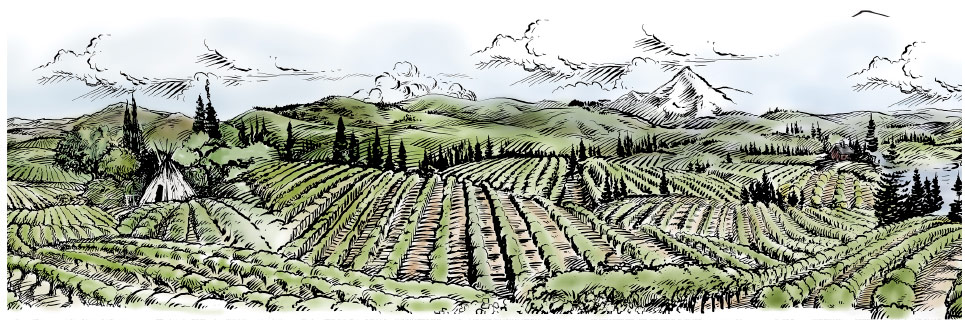The effects of water on tannin levels in grape development - Part three: Irrigation
In February I had the pleasure of speaking at the Oregon Wine Industry Symposium on a panel talking about grape and wine tannins. Anna Matzinger, Steve Price and I wanted to clarify what tannins are, how their levels in wine affect texture and structure of the wine, where tannins come from, the role of soil moisture on grape tannin levels and how harvest date affects quality of tannins.
I was tasked with talking about the relationship between soil water status and grape tannin levels. It was a great opportunity to improve my understanding of the relationship, and helped me come to terms with the difference between dry farming here in the Willamette Valley and the irrigated vineyards in Southern Oregon. On dry farmed sites factors like soil type, depth and texture, along with the seasonal rainfall have a profound effect on tannin level. In vineyards where there isn’t enough soil moisture to sustain the vines for the entire season, supplementary irrigation is needed. In those vineyards you have more control over the tannin levels of the grapes. To understand this topic and prep for my panel discussion, I studied three key disciplines: 1) soil science; 2) plant physiology; and 3) irrigation management.
Before I get into this I will say that I think the Internet is great for researching topics but I really like books.
part three: irrigation
By controlling the water applied to plants through irrigation you can study its effects on the growth of the vines, yield and also the fruit chemistry. In dry farmed situations it’s very hard to control the water therefore it is harder to study the effects of water on the vines and fruit.
There have been a lot of studies on irrigation management all over the world and the effects of varying irrigation levels at different points throughout the season. What researchers have found is that by applying less water than the vines are losing to ET between fruit set and veraison, you can control the vine growth and vigor, increase the exposure of the fruit and reduce the berry size. All of these factors help to increase the concentration of tannins and other phenolic compounds in the grapes, desirable in red grapes but less desirable in white grapes.
This understanding has led to wide spread adoption of the irrigation practice called Regulated Deficit Irrigation (RDI) and it is used to improve the quality of red wine grapes. To learn more about RDI visit this site: http://cru.cahe.wsu.edu/CEPublications/EM061E/EM061E.pdf.

